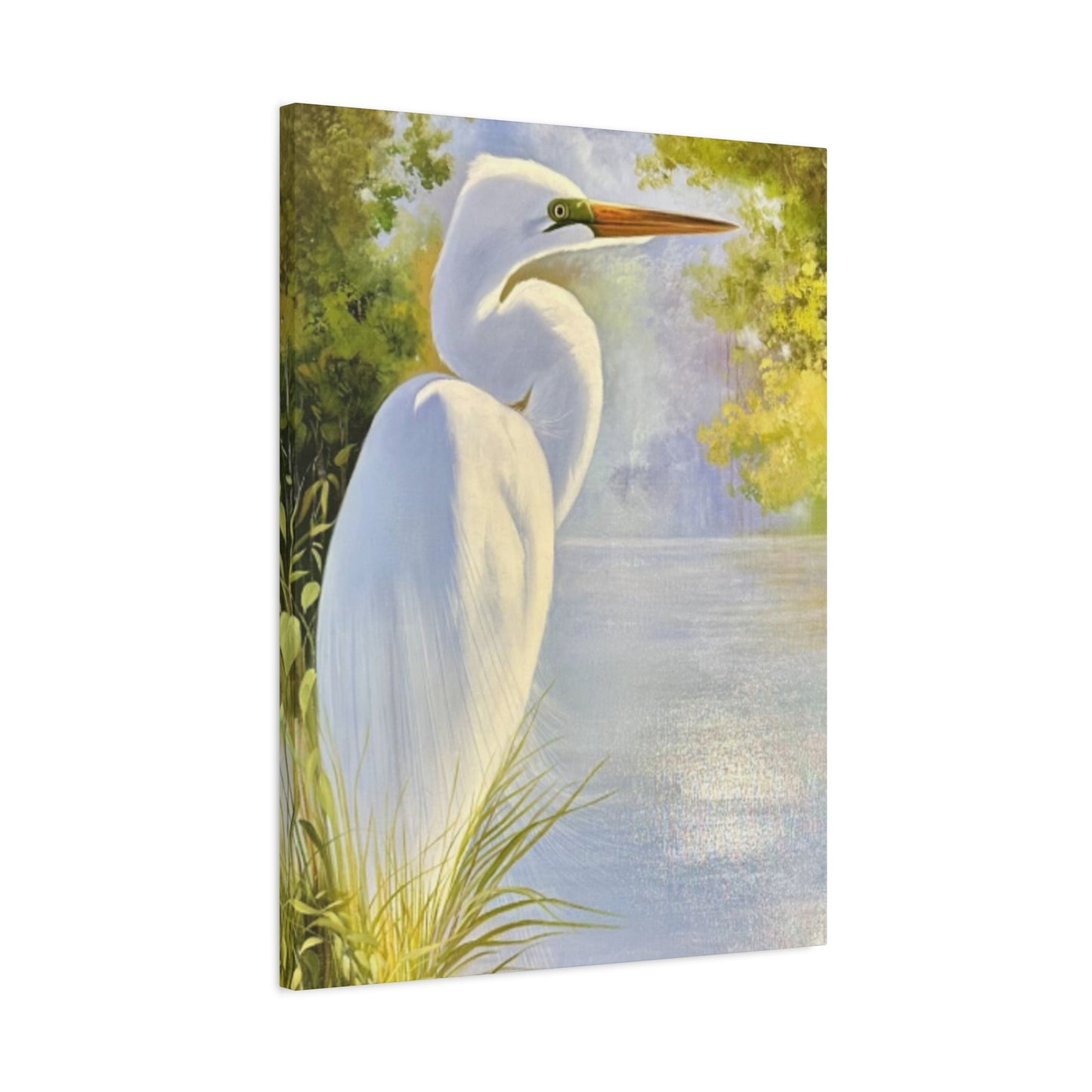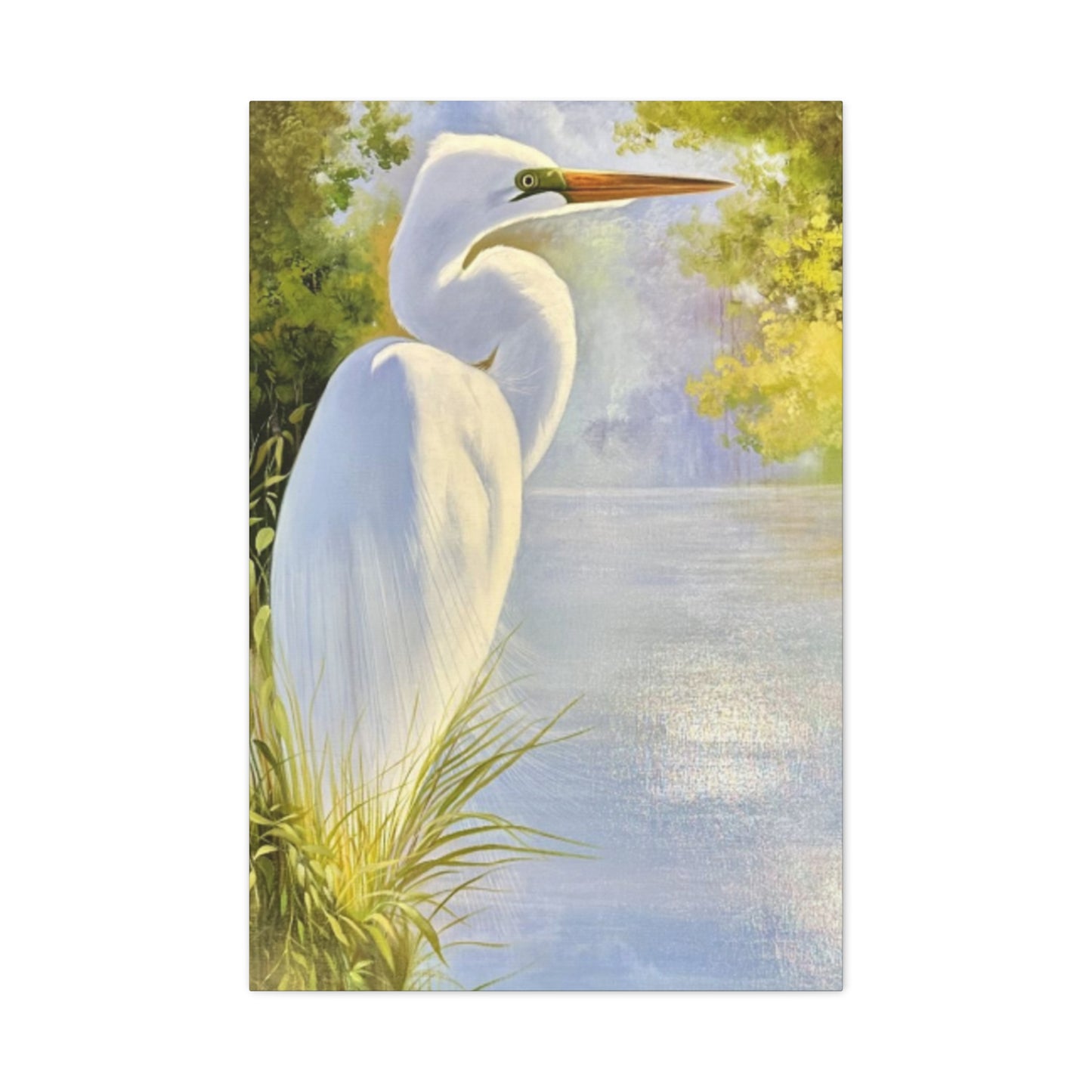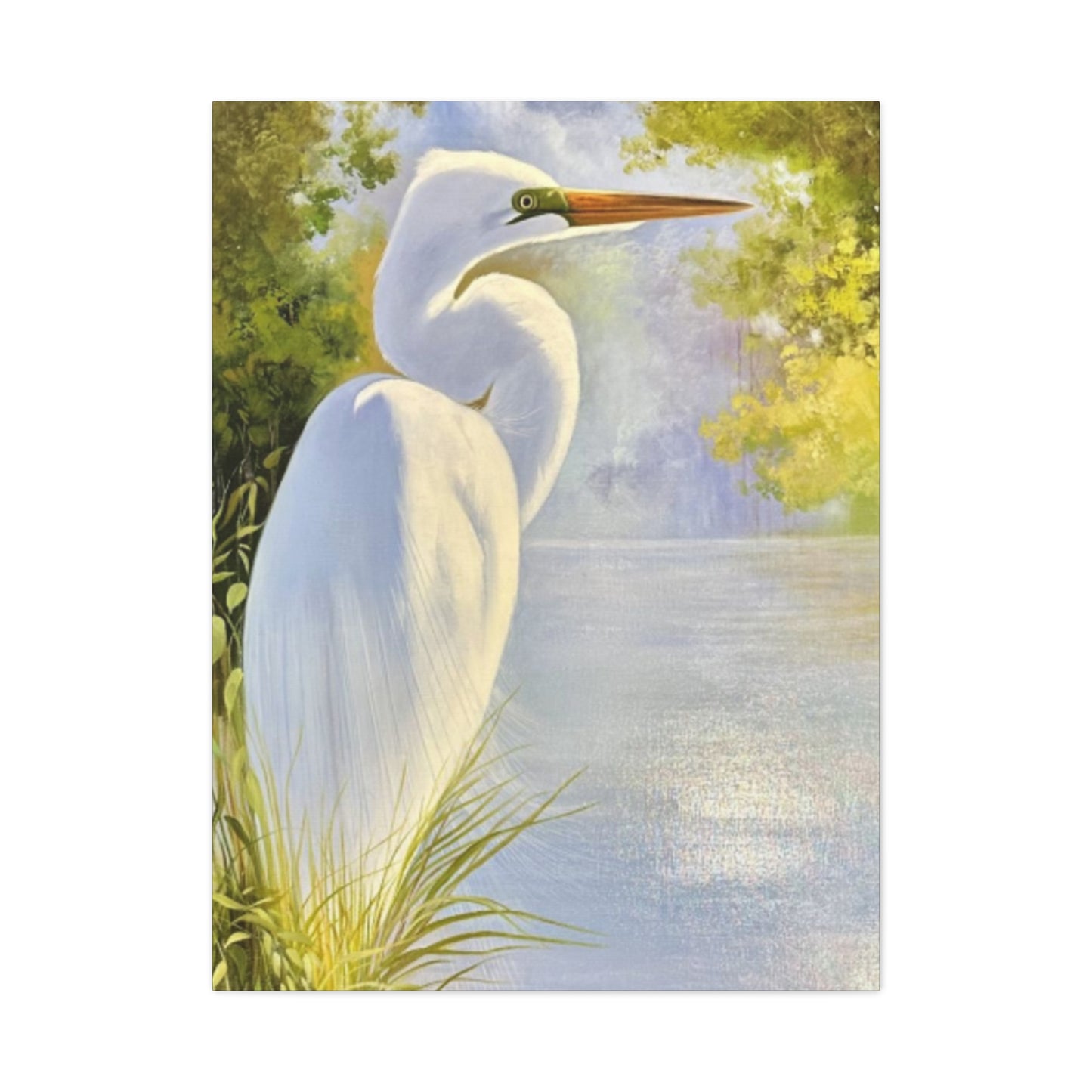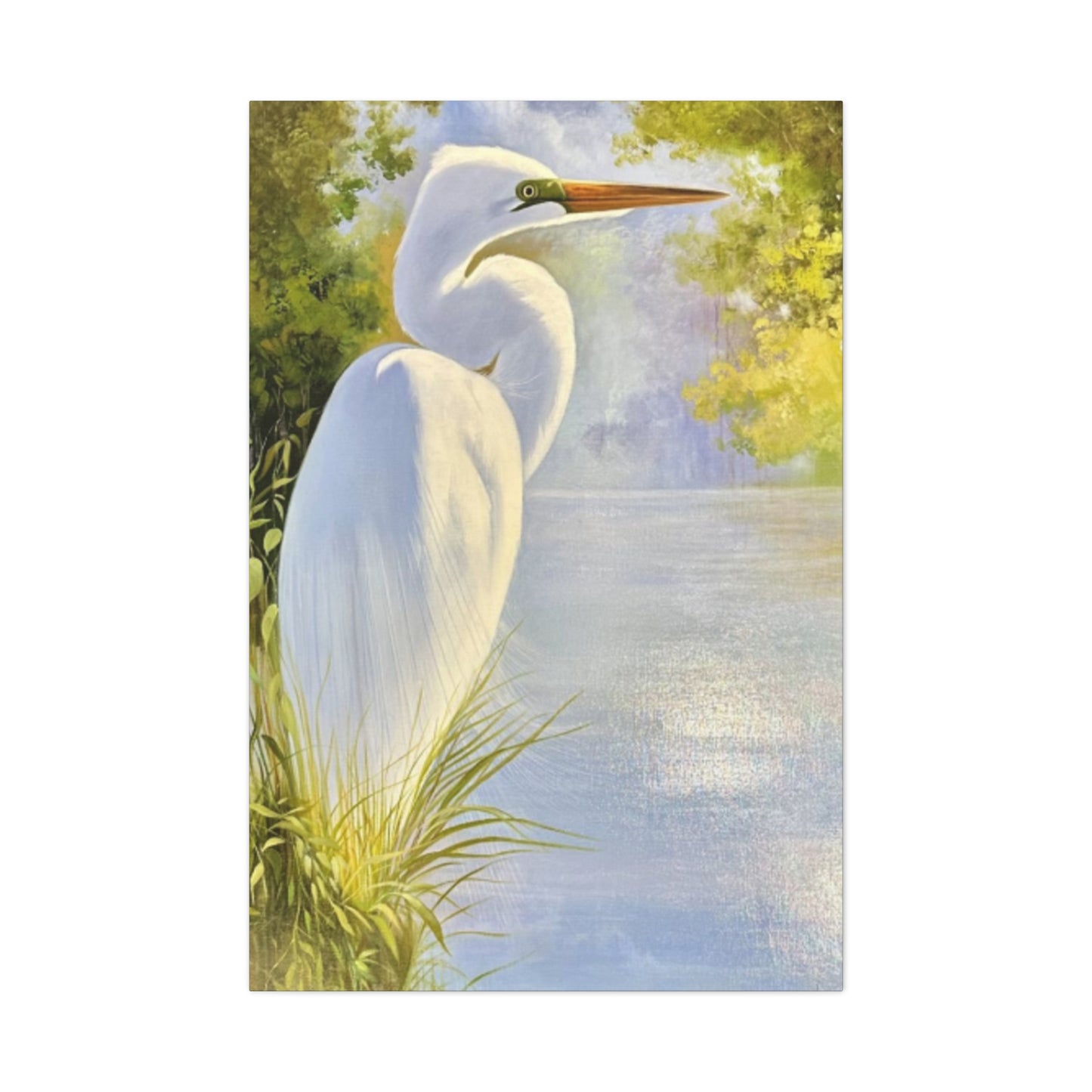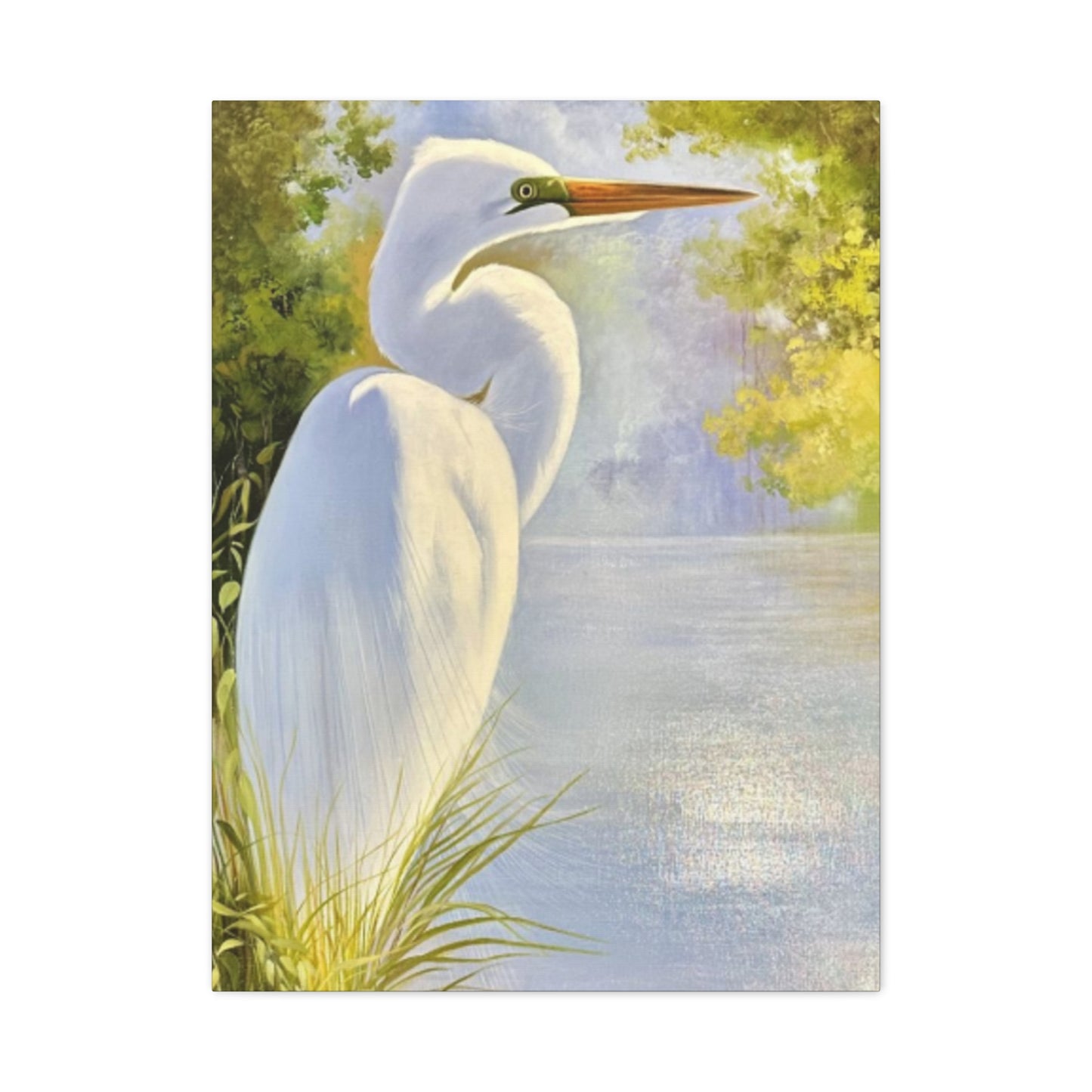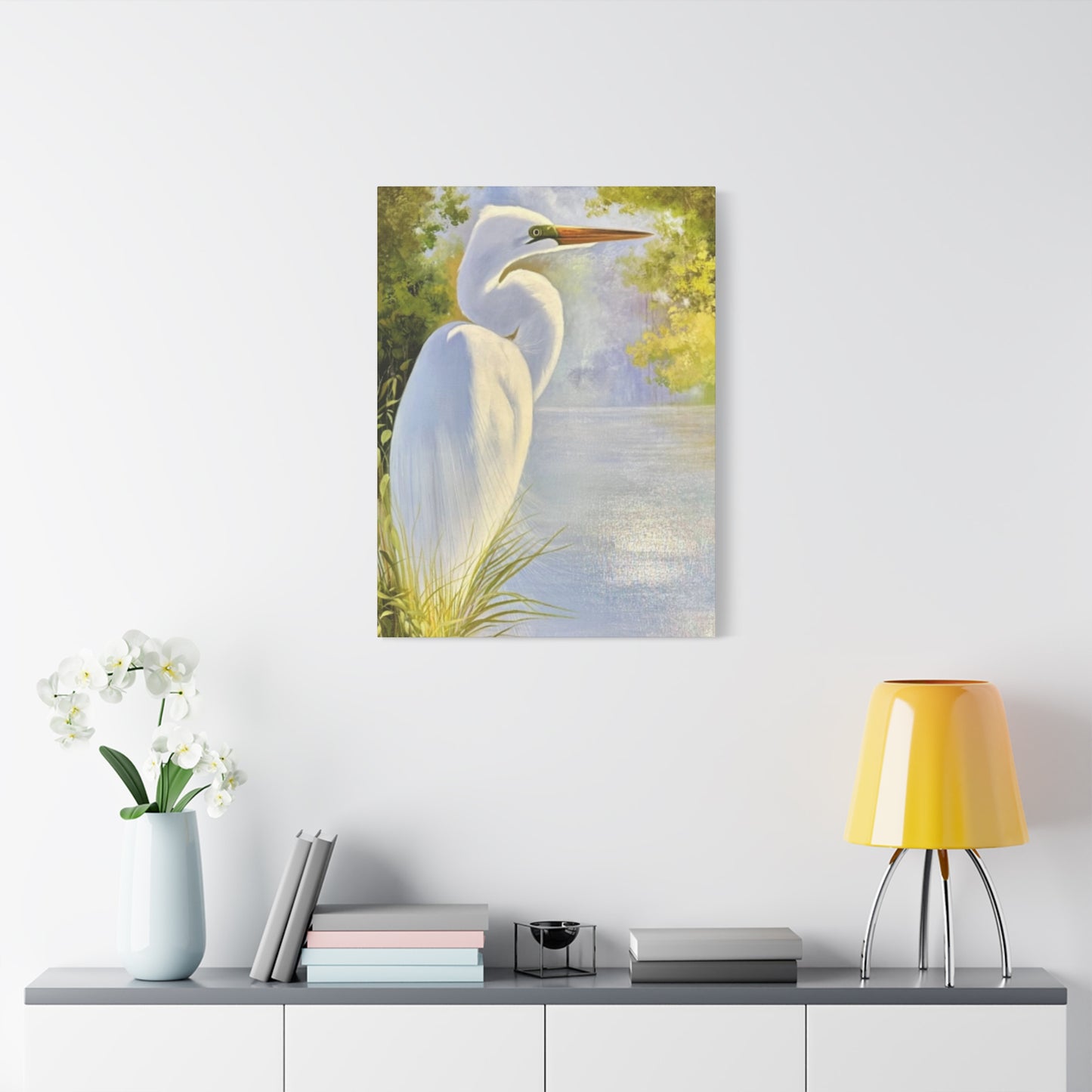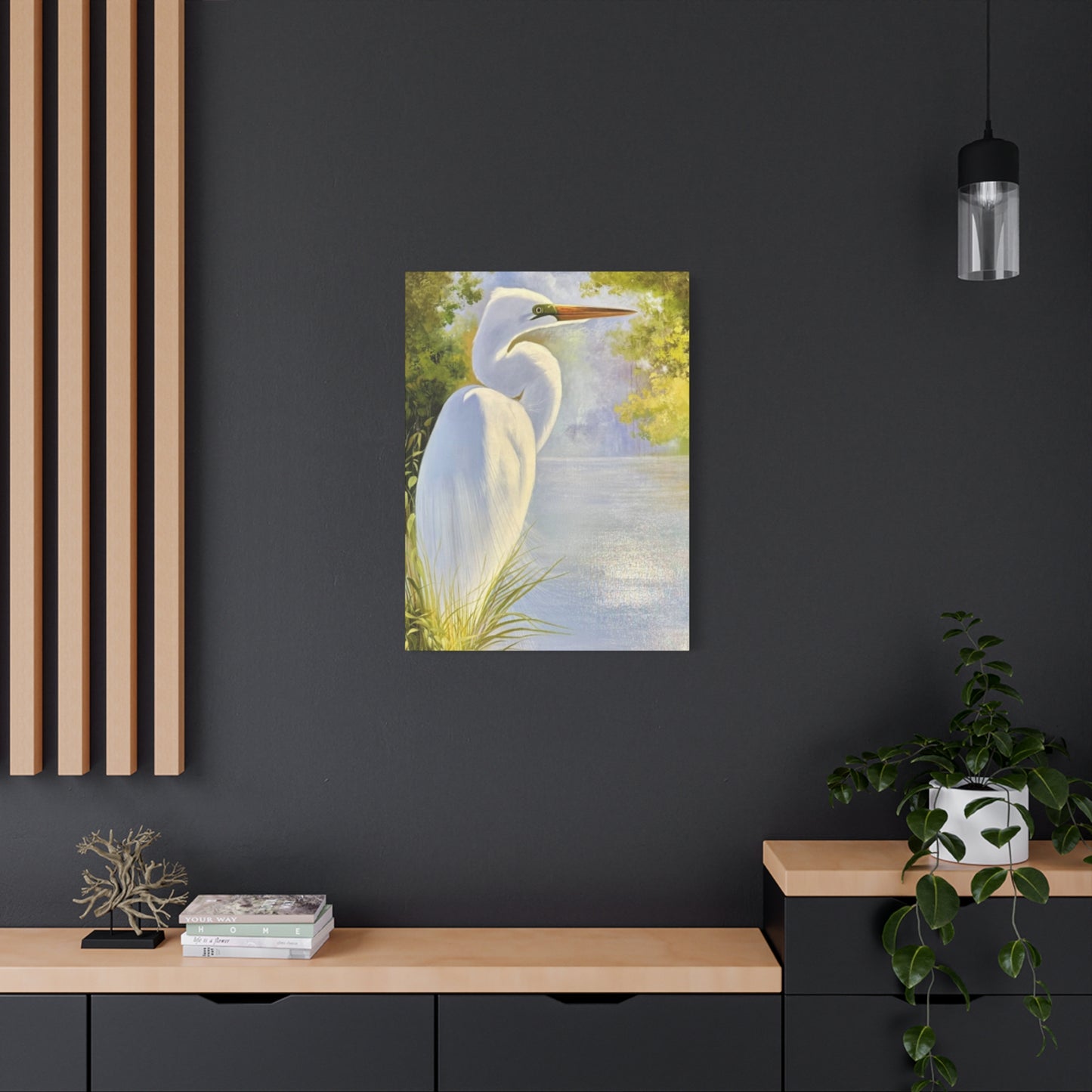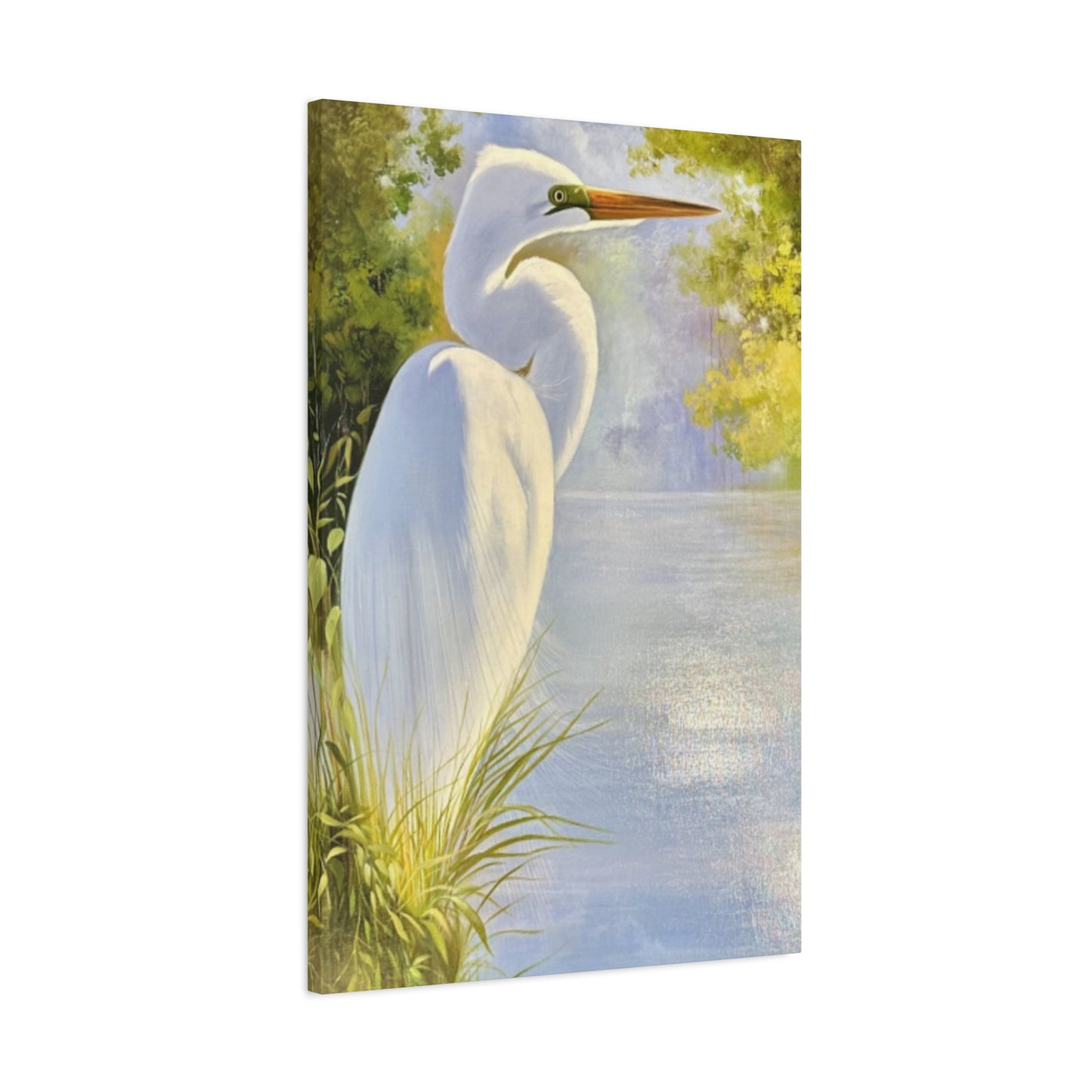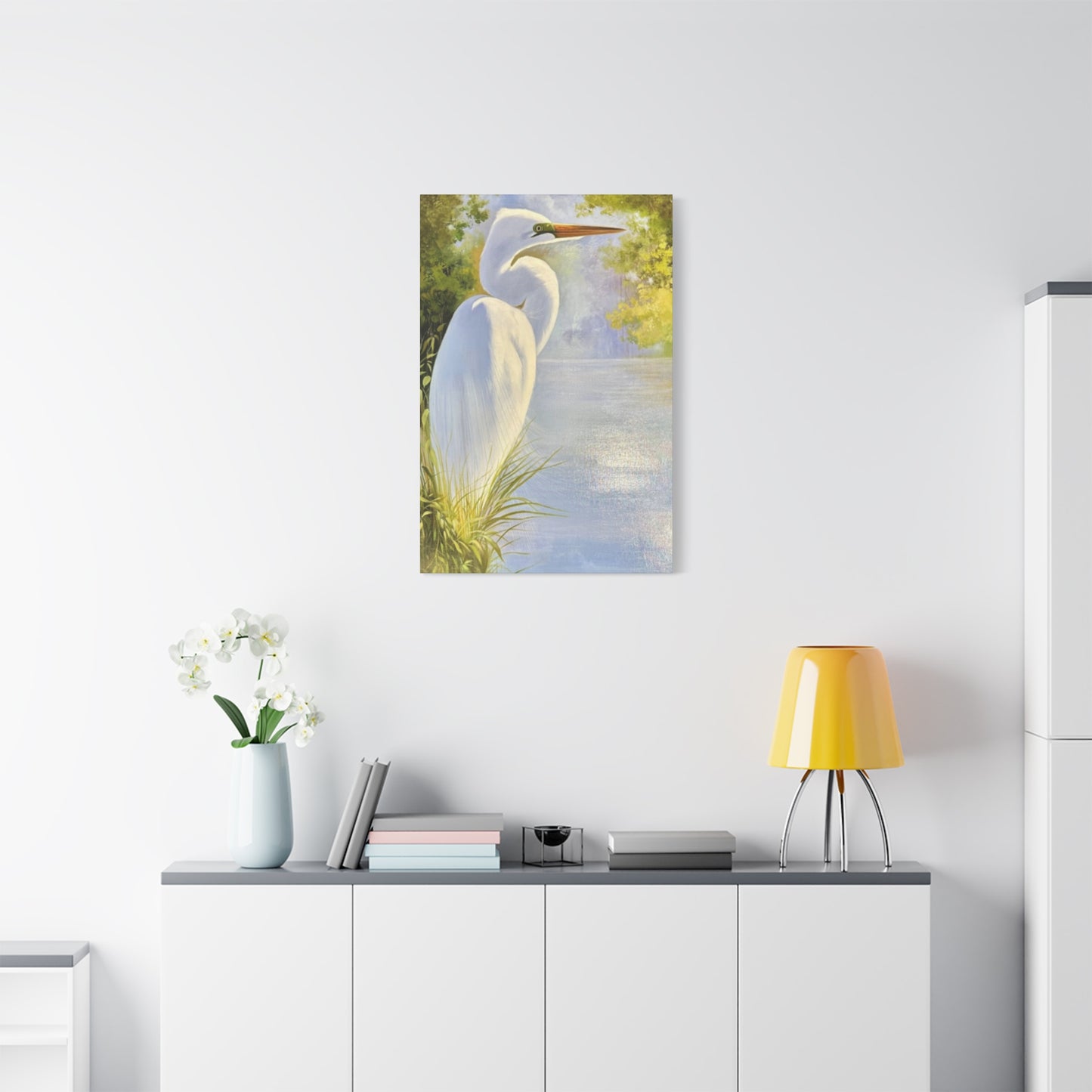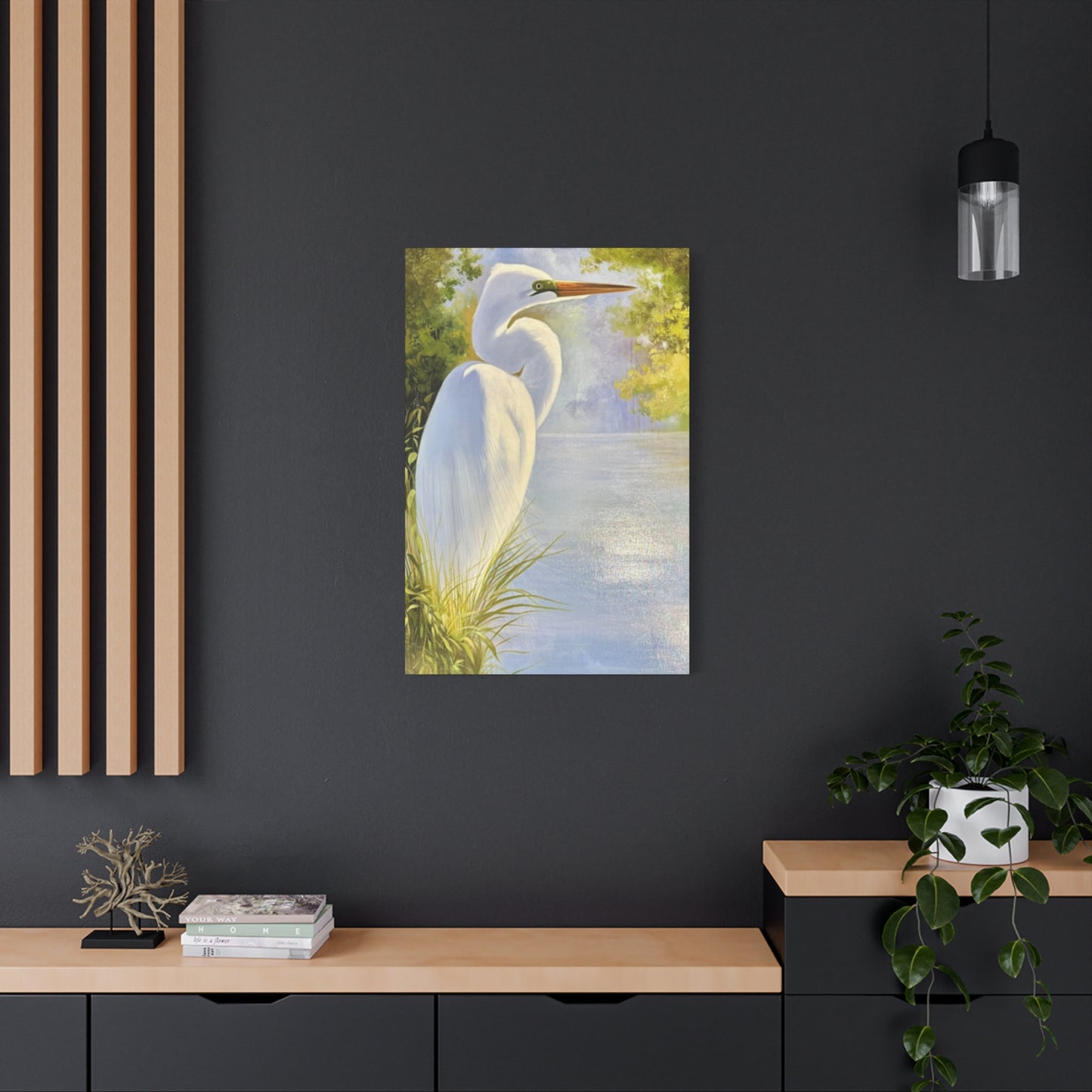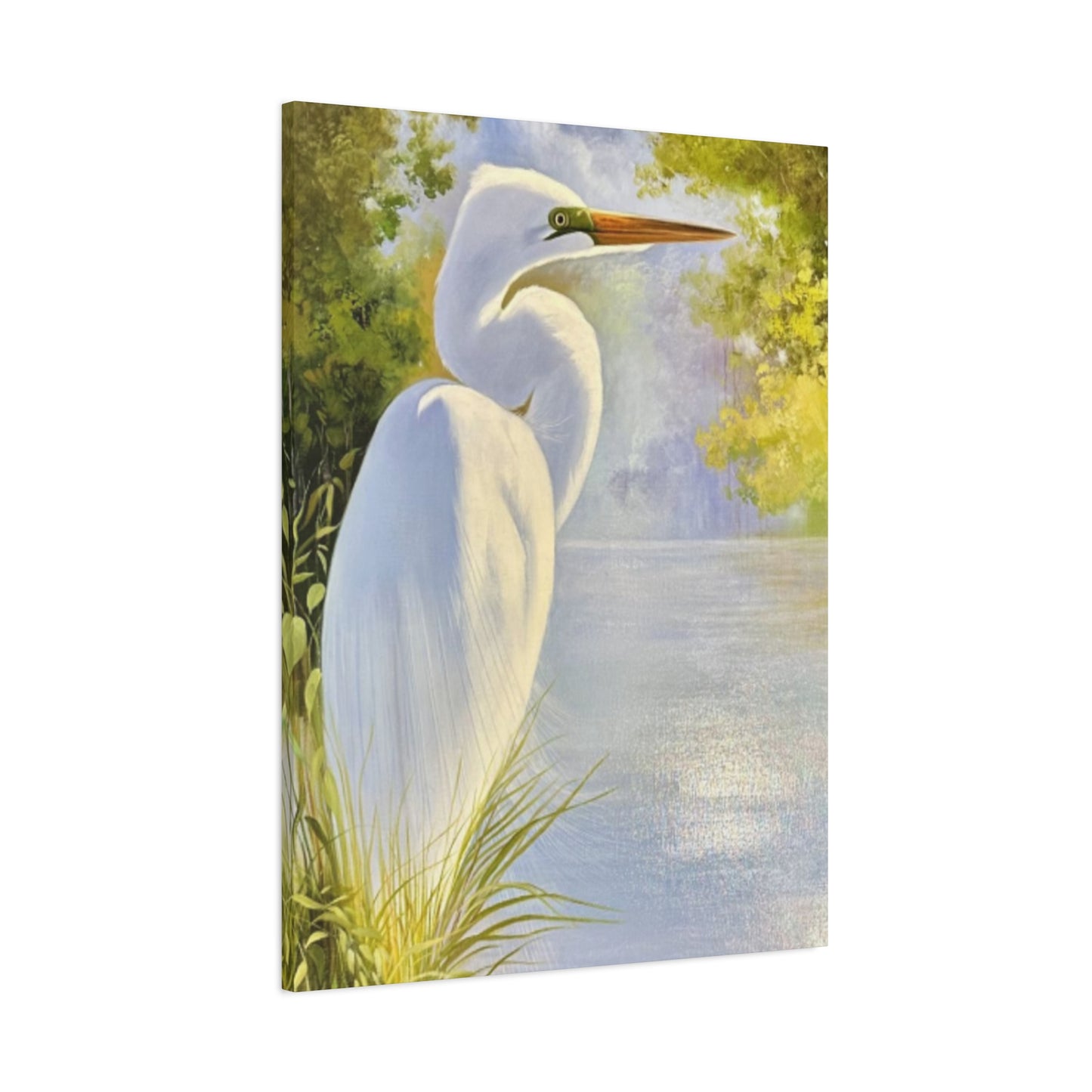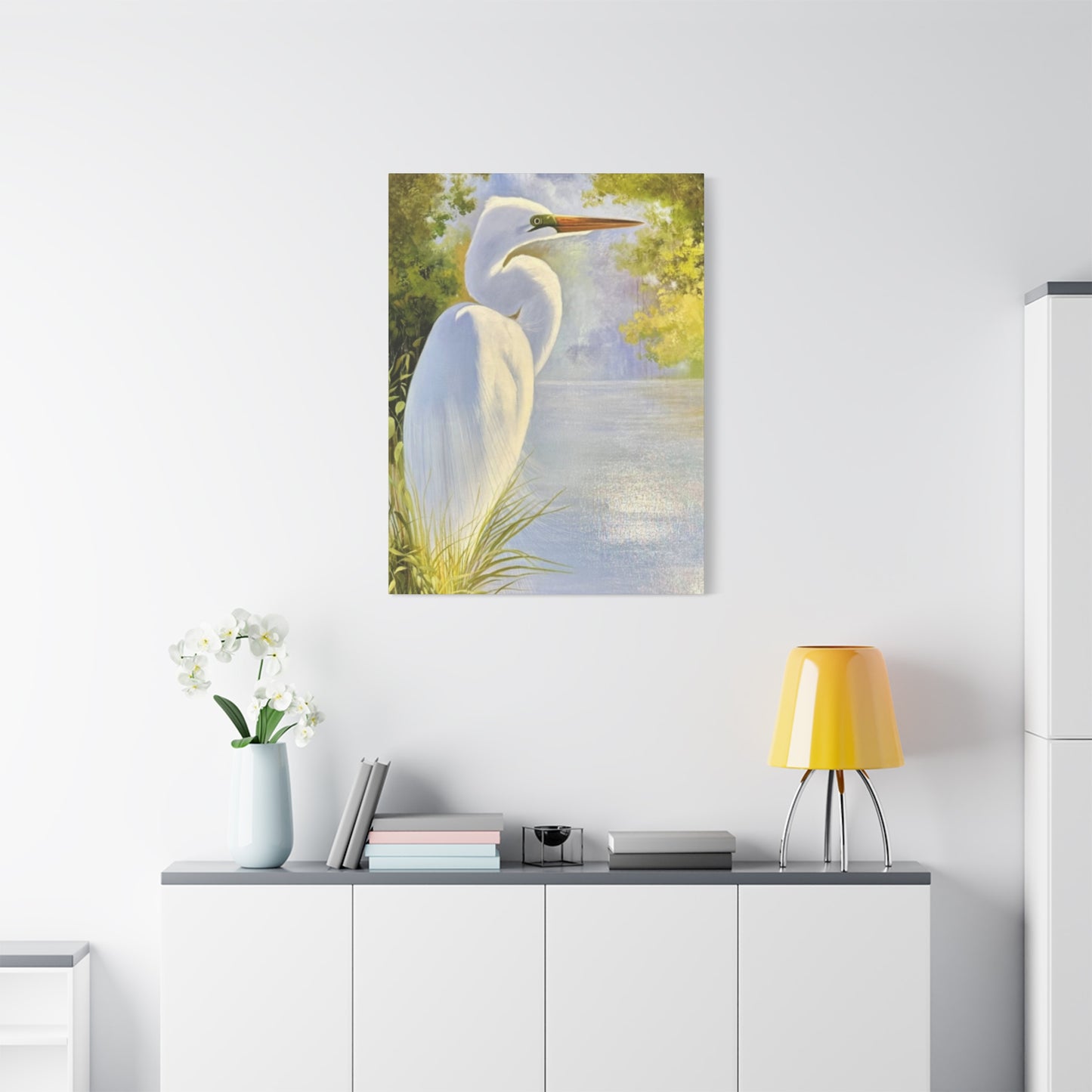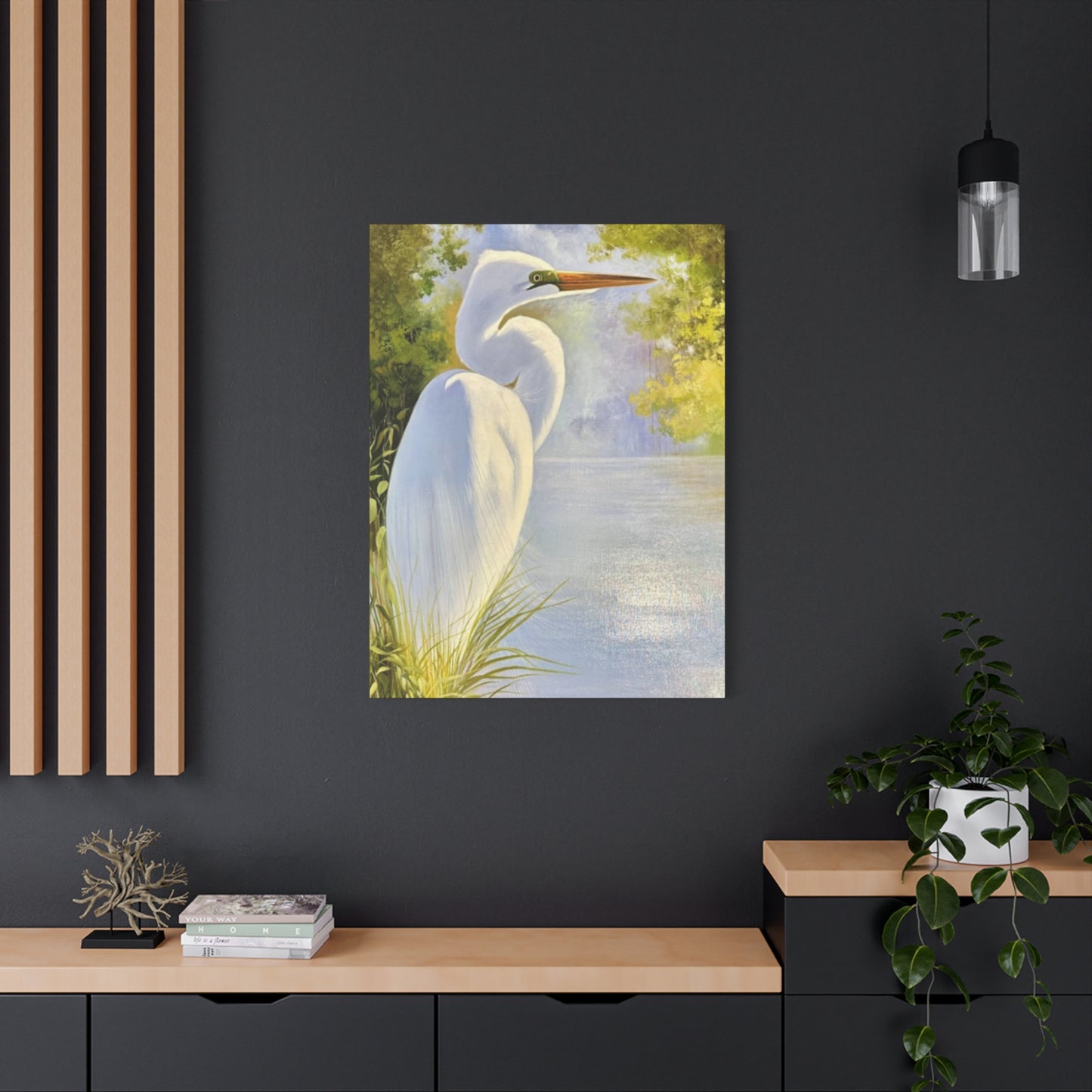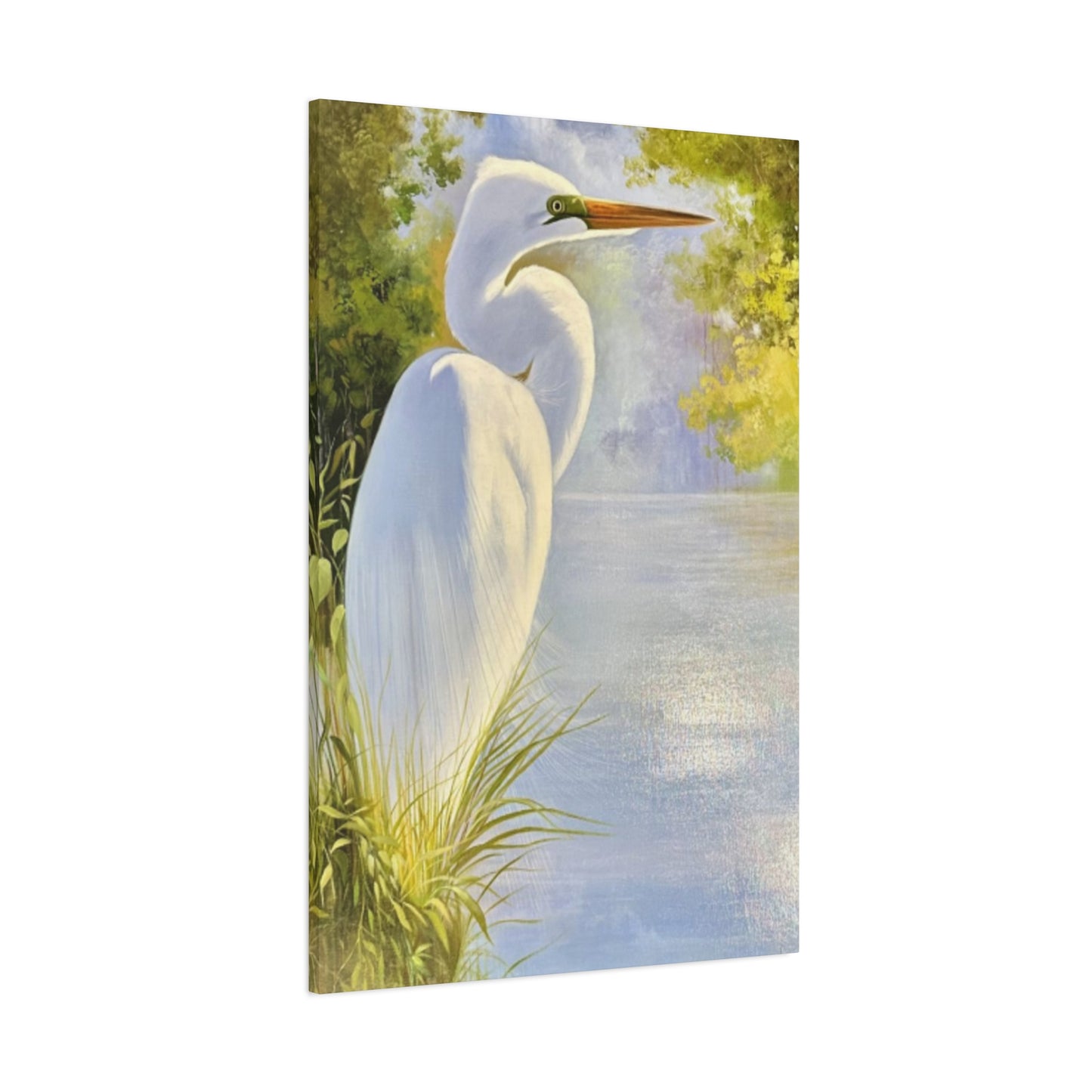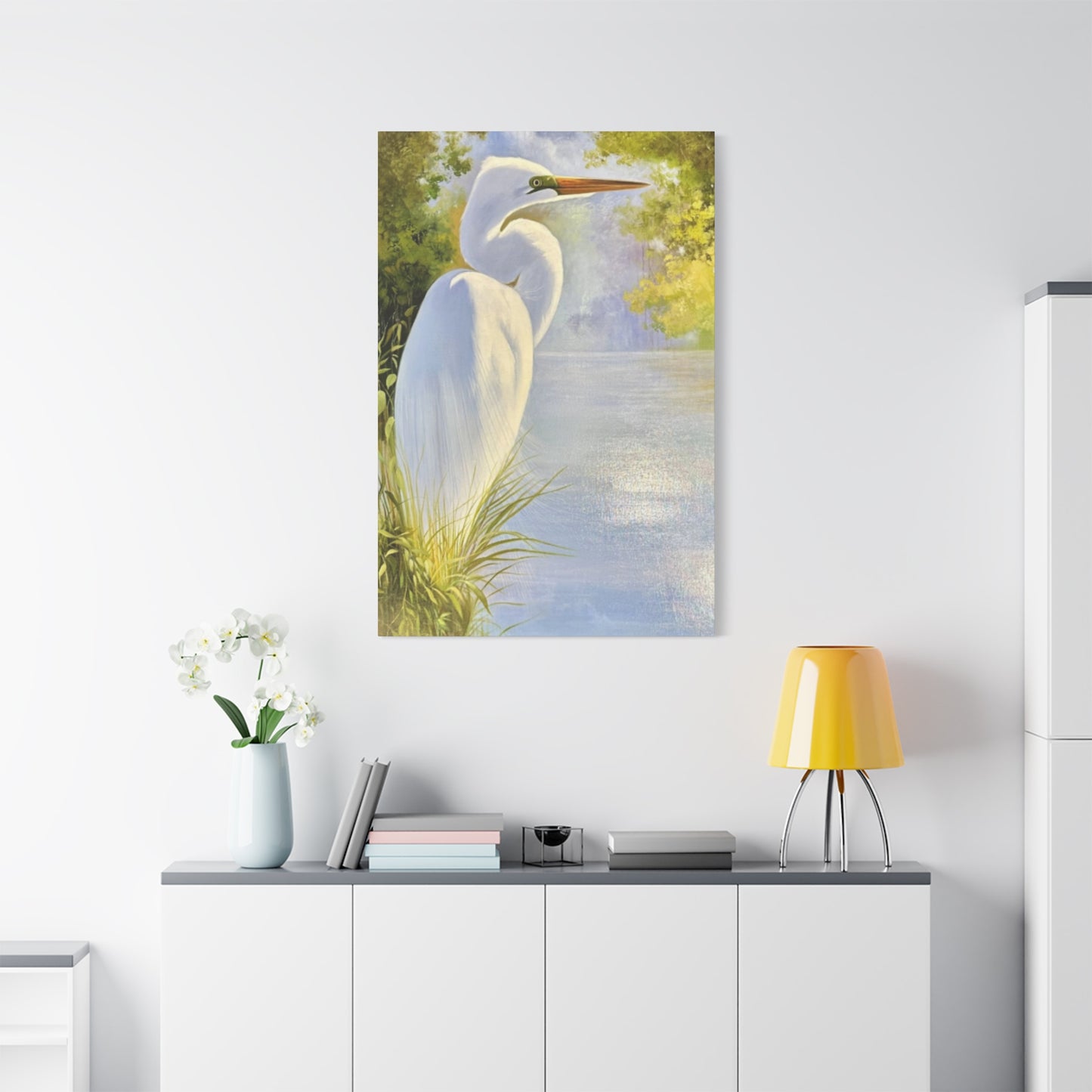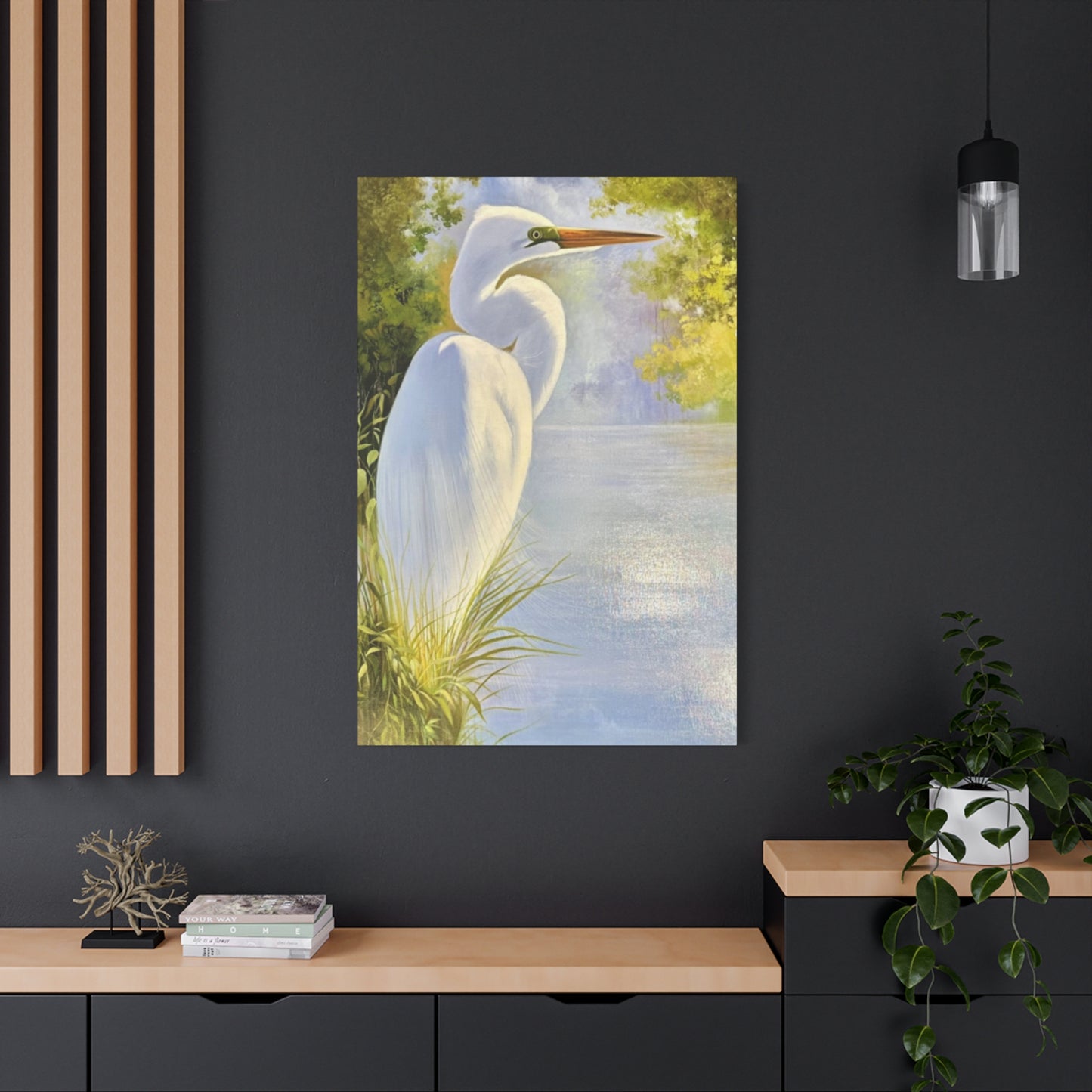Bring the Wilderness Home with Stunning Herons Wild Wall Art
Wild heron wall art represents one of nature's most elegant and captivating subjects, bringing the serene beauty of these majestic birds into residential and commercial environments. These graceful creatures, with their distinctive silhouettes and tranquil presence, have captured the imagination of artists and nature enthusiasts for centuries. The growing popularity of wildlife-themed artwork has made heron canvas prints an increasingly sought-after choice for those seeking to incorporate natural elements into their living environments.
The appeal of heron artwork extends far beyond mere decoration. These magnificent birds embody qualities of patience, grace, and harmony with nature that resonate deeply with viewers. Whether depicted in their natural wetland habitats, captured in moments of silent contemplation, or portrayed through artistic interpretation, herons offer a powerful connection to the natural world that can transform any room into a peaceful sanctuary.
Contemporary artists and photographers have developed numerous approaches to capturing the essence of wild herons, from photorealistic representations that showcase every feather detail to abstract interpretations that focus on form, movement, and emotional impact. This diversity ensures that heron wall art can complement virtually any decorative style, from traditional rustic themes to modern minimalist aesthetics.
The versatility of heron canvas prints makes them suitable for various environments, including residential living areas, professional offices, hospitality venues, and wellness facilities. Their calming presence and natural beauty create an atmosphere of tranquility that enhances both relaxation and contemplation. As more people seek to bring elements of nature into their daily environments, wild heron wall art has emerged as an ideal solution that combines artistic merit with emotional resonance.
Peaceful Wild Heron Displays for Contemporary Living Areas
Creating a serene atmosphere in contemporary living areas through wild heron displays requires careful consideration of both artistic selection and placement strategies. The inherent tranquility of these magnificent birds makes them particularly effective in establishing a calm, contemplative environment that serves as a counterbalance to the often hectic pace of modern life.
When selecting heron artwork for living areas, consider pieces that capture the bird's natural grace and poise. Images of herons standing motionlessly in shallow waters, their necks elegantly curved and eyes focused with intense concentration, create an immediate sense of peaceful contemplation. These moments of stillness translate beautifully to canvas prints, offering viewers a visual reminder to pause and appreciate the present moment.
The color palette of heron displays plays a crucial role in achieving the desired calming effect. Soft blues and grays that reflect the natural coloring of these birds blend seamlessly with contemporary furnishings while maintaining a connection to their aquatic habitats. Muted earth tones in the background elements, such as golden marsh grasses or weathered wooden posts, add warmth and depth without overwhelming the peaceful atmosphere.
Scale considerations are equally important when incorporating heron displays into living areas. Large-format prints can serve as commanding focal points, drawing the eye and establishing the room's peaceful theme. Alternatively, smaller pieces can be grouped together to create an intimate gallery arrangement that invites closer examination and contemplation.
The positioning of heron artwork within living areas should take advantage of natural lighting whenever possible. Placing pieces near windows allows natural light to illuminate the artwork throughout the day, creating subtle changes in appearance that mirror the dynamic nature of outdoor environments. This connection between indoor artwork and outdoor lighting conditions enhances the sense of bringing nature indoors.
Consider the viewing angles from different seating areas within the room. Heron displays should be positioned so they can be appreciated from multiple vantage points, whether someone is seated on a sofa, relaxing in an armchair, or moving through the area. This accessibility ensures that the calming influence of the artwork can be experienced throughout the living environment.
The integration of heron displays with existing furnishings requires attention to both color coordination and thematic consistency. Neutral-toned furniture provides an excellent backdrop for heron artwork, allowing the natural beauty of the birds to take center stage. Accent pieces such as throw pillows, rugs, or decorative objects can echo colors found in the heron displays, creating a cohesive design scheme that feels both intentional and organic.
Lighting design plays a supporting role in maximizing the impact of heron displays. Subtle accent lighting can highlight key features of the artwork while maintaining the overall peaceful atmosphere. Avoid harsh or overly bright illumination that might detract from the serene quality that makes heron artwork so appealing for living environments.
Professional Framing Techniques for Heron Wildlife Artwork
Professional framing techniques for heron wildlife artwork require specialized knowledge of both artistic presentation and conservation practices. The unique characteristics of wildlife photography and artwork demand careful consideration of materials, methods, and environmental factors to ensure optimal display quality and long-term preservation.
The selection of framing materials begins with understanding the specific requirements of heron artwork. High-quality, acid-free matting materials prevent chemical degradation that could affect both the artwork and the frame over time. Museum-quality mounting boards provide stable support while allowing for natural expansion and contraction that occurs with changes in humidity and temperature.
Glass selection represents a critical decision in the framing process. Conservation-grade UV-filtering glass protects delicate inks and pigments from fading while maintaining optical clarity. Anti-reflective coatings minimize glare and reflections that could interfere with viewing, particularly important for detailed heron photography where subtle textures and coloring deserve full appreciation.
The choice of frame styles should complement rather than compete with the natural beauty of heron artwork. Simple, elegant profiles in natural wood tones or classic metals allow the artwork to remain the focal point while providing appropriate support and protection. Ornate or heavily decorated frames risk overwhelming the subtle grace that characterizes quality heron artwork.
Matting techniques offer opportunities to enhance the visual impact of heron displays while providing necessary conservation benefits. Multiple mat layers can create depth and dimension, drawing the viewer's attention toward the central image. Color selection for matting materials should harmonize with the artwork's color palette while maintaining neutrality that won't compete for attention.
Conservation mounting methods ensure that heron artwork remains in pristine condition for decades. Acid-free mounting techniques prevent chemical interactions that could cause discoloration or deterioration. Proper mounting allows for natural movement of materials while maintaining secure positioning that prevents shifting or damage.
Climate considerations play an important role in framing decisions for heron artwork. Sealed framing packages protect against moisture infiltration and air pollutants that could affect image quality over time. Proper spacing between the artwork and glass prevents condensation while allowing for air circulation that helps maintain stable conditions within the frame.
Professional framing also addresses the specific display requirements of different heron artwork types. Canvas prints may require different approaches than photographic prints or watercolor paintings. Understanding these distinctions ensures that each piece receives appropriate treatment for its specific medium and intended display environment.
The installation hardware selected for framed heron artwork must provide secure mounting while allowing for easy repositioning if desired. Professional-grade hanging systems distribute weight evenly and provide stability that prevents shifting or damage to both the artwork and the wall surface.
Quality control throughout the framing process ensures that every aspect of the finished piece meets professional standards. Careful inspection of materials, assembly techniques, and final presentation guarantees that the framed heron artwork will provide years of enjoyment while maintaining its original beauty and impact.
Utilizing Heron Canvas Art to Establish Natural Retreats
Establishing natural retreats through heron canvas art requires a thoughtful approach that goes beyond simple decoration to create environments that genuinely connect occupants with the tranquil essence of these remarkable birds. The process begins with understanding how heron imagery can transform ordinary rooms into sanctuaries that promote relaxation, contemplation, and a deeper appreciation for the natural world.
The foundation of any natural retreat lies in selecting heron canvas art that captures authentic moments of wildlife behavior and habitat interaction. Images of herons in their native wetland environments provide the most powerful connection to nature, offering viewers a window into ecosystems that many may never experience firsthand. These authentic representations serve as constant reminders of the beauty and diversity that exists in the natural world.
Color coordination plays a vital role in establishing the retreat atmosphere. The natural color palette found in heron habitats - soft blues of water, muted greens of vegetation, warm browns of marsh grasses, and the elegant grays and whites of the birds themselves - creates a harmonious foundation for the entire room design. These colors work together to establish a sense of calm that is essential for any effective natural retreat.
The arrangement of heron canvas art within the retreat environment should create visual flow that guides the eye naturally through the room while maintaining focal points that encourage pause and contemplation. Multiple pieces can work together to tell a story of heron life and behavior, from feeding and hunting to rest and migration patterns. This narrative approach adds depth and interest that sustains long-term engagement with the artwork.
Complementary elements support and enhance the retreat atmosphere established by heron canvas art. Natural materials such as stone, wood, and organic textiles echo the textures and surfaces found in heron habitats. These materials create tactile connections to nature that reinforce the visual messages conveyed by the artwork.
Lighting design in natural retreats should mimic the soft, changing qualities of outdoor illumination. Natural light from windows provides the ideal foundation, with supplemental artificial lighting that can be adjusted throughout the day to maintain appropriate ambiance. Harsh or artificial lighting should be avoided as it conflicts with the peaceful atmosphere that heron artwork helps establish.
The positioning of seating and relaxation areas should take advantage of the calming influence of heron canvas art. Comfortable seating arranged to face major artwork pieces creates natural meditation and contemplation zones where occupants can fully appreciate both the artistic merit and emotional impact of the heron imagery.
Sound considerations contribute significantly to the retreat atmosphere. While heron artwork provides visual tranquility, the addition of subtle water sounds or gentle nature audio can enhance the immersive experience. However, these elements should remain subtle and unobtrusive, supporting rather than competing with the peaceful atmosphere established by the visual artwork.
The integration of living plants within the retreat environment creates additional connections to the natural world while complementing the heron canvas art. Plants that might naturally occur in heron habitats, such as marsh grasses or water-loving species, provide authentic environmental cues that enhance the overall retreat experience.
Temperature and air quality management ensure that the retreat environment remains comfortable and inviting. Proper ventilation and climate control create conditions that encourage extended periods of relaxation and contemplation, maximizing the therapeutic benefits that can be derived from spending time in a well-designed natural retreat.
Herons in Wetland Environments: Wildlife Canvas Artwork Concepts
Wetland environments provide the perfect backdrop for showcasing herons in their natural element, offering artists and photographers countless opportunities to capture these magnificent birds in settings that highlight their ecological significance and natural beauty. Wildlife canvas artwork featuring herons in wetland environments serves both aesthetic and educational purposes, introducing viewers to the complex ecosystems that support these remarkable creatures.
The diversity of wetland environments offers rich material for heron artwork concepts. From pristine natural marshes with dense reed beds and crystal-clear waters to managed wetland areas that demonstrate conservation success stories, each setting provides unique opportunities for artistic interpretation. These varied environments allow artists to explore different moods, lighting conditions, and seasonal changes that affect both the landscape and the heron behavior patterns.
Seasonal variations in wetland environments create compelling artistic opportunities for heron canvas artwork. Spring scenes might feature herons during nesting season, with lush green vegetation and abundant wildlife activity. Summer compositions can capture the intense focus of herons hunting in warm, golden light filtering through marsh grasses. Autumn offerings might show herons preparing for migration against backgrounds of changing foliage colors, while winter scenes present opportunities for stark, minimalist compositions featuring herons in snow-covered landscapes.
The ecological relationships between herons and their wetland environments provide rich conceptual material for wildlife canvas artwork. Compositions that show herons interacting with other wildlife species, from small fish and amphibians to other bird species, help viewers understand the complex web of relationships that characterize healthy wetland ecosystems. These educational aspects add depth and meaning to purely aesthetic considerations.
Water plays a central role in wetland heron artwork, offering opportunities to explore reflection, light refraction, and movement. Still water surfaces can create perfect mirror images that double the visual impact of heron subjects, while rippling water introduces dynamic elements that suggest movement and life. The interaction between herons and water - whether they're wading, drinking, or hunting - provides natural focal points for compelling compositions.
Vegetation patterns in wetland environments offer important compositional elements for heron artwork. Tall marsh grasses can frame heron subjects, creating natural borders and directing viewer attention. Reed beds provide texture and depth, while lily pads and other aquatic plants add color variation and environmental context. The careful integration of vegetation elements helps create realistic, immersive artwork that transports viewers to actual wetland locations.
Weather conditions significantly impact the mood and atmosphere of wetland heron artwork. Misty morning scenes create ethereal, dreamlike qualities that emphasize the mysterious nature of wetland environments. Stormy skies can add drama and tension, while clear, sunny conditions showcase the vibrant colors and clear details that make wetland ecosystems so visually appealing.
The time of day chosen for wetland heron artwork affects both lighting quality and behavioral opportunities. Dawn and dusk periods, known as the golden hours, provide warm, soft lighting that flatters both heron subjects and their wetland environments. These times also coincide with peak activity periods for many wetland species, offering opportunities to capture natural behaviors and interactions.
Conservation themes can be subtly integrated into wetland heron artwork, highlighting the importance of protecting these vital ecosystems. Compositions that show healthy, thriving wetland environments with abundant wildlife help viewers understand what conservation efforts aim to preserve. These positive messages can inspire appreciation and support for wetland conservation initiatives.
The technical challenges of creating wetland heron artwork require specialized knowledge of both wildlife behavior and environmental conditions. Understanding heron feeding patterns, nesting behaviors, and habitat preferences enables artists to create authentic representations that resonate with viewers who appreciate accuracy and attention to detail.
Photorealistic Heron Artwork for Wildlife Enthusiasts
Photorealistic heron artwork represents the pinnacle of technical achievement in wildlife art, combining exceptional artistic skill with deep understanding of heron anatomy, behavior, and habitat requirements. Wildlife enthusiasts particularly appreciate this style for its scientific accuracy and attention to detail that allows for close study of these magnificent birds without the need for field observation equipment or extended outdoor excursions.
The creation of photorealistic heron artwork begins with extensive reference material gathering. Artists must study herons from multiple angles, in various lighting conditions, and throughout different behavioral states to develop the comprehensive understanding necessary for authentic representation. This research phase often involves collaboration with wildlife photographers, ornithologists, and field researchers who can provide insights into heron behavior and habitat preferences.
Anatomical accuracy forms the foundation of successful photorealistic heron artwork. Every aspect of the bird's physical structure, from the precise curve of the neck to the detailed arrangement of feathers, must be rendered with scientific precision. The distinctive features that characterize different heron species - such as bill shape, leg coloring, and plumage patterns - require careful attention to ensure accurate species identification.
Feather rendering represents one of the most challenging aspects of photorealistic heron artwork. Each feather type, from the small, dense feathers that cover the head and neck to the large flight feathers of the wings, requires different artistic techniques and approaches. The subtle variations in color, texture, and positioning that give herons their distinctive appearance must be captured with exceptional precision.
Lighting effects in photorealistic heron artwork must accurately represent how natural light interacts with heron plumage and form. The way sunlight filters through feathers, creates shadows beneath the bird, and reflects off water surfaces requires sophisticated understanding of both artistic technique and natural phenomena. These lighting effects contribute significantly to the overall realism and visual impact of the finished artwork.
Environmental integration challenges artists to create believable settings that complement the photorealistic heron subjects. Every element of the background, from individual plant species to water surface textures, must maintain the same level of detail and accuracy as the primary subject. This comprehensive approach ensures that the entire composition maintains its realistic appearance and educational value.
Color accuracy requires extensive knowledge of heron species variations and seasonal changes in appearance. The subtle gradations of gray, white, and blue that characterize most heron species must be rendered with precision that allows viewers to appreciate the natural beauty of these birds. Seasonal variations, such as breeding plumage changes, add additional complexity to color decisions.
Behavioral authenticity ensures that photorealistic heron artwork captures genuine moments from the bird's natural life. Hunting poses, resting positions, and social interactions must reflect actual heron behavior patterns observed in the wild. This authenticity adds educational value while maintaining the artistic impact that makes photorealistic artwork so compelling.
Technical execution of photorealistic heron artwork requires mastery of various artistic media and techniques. Whether created using traditional methods such as oil painting or watercolor, or modern digital techniques, the artist must demonstrate exceptional skill in rendering texture, form, and color. The choice of medium affects both the creation process and the final appearance of the artwork.
Quality control throughout the creation process ensures that every aspect of the photorealistic heron artwork meets professional standards. Regular comparison with reference materials, consultation with wildlife experts, and careful attention to technical details help maintain the accuracy and visual impact that wildlife enthusiasts expect from this specialized art form.
The presentation of photorealistic heron artwork requires careful consideration of display methods that preserve the illusion of realism. Appropriate framing, lighting, and positioning all contribute to the overall effectiveness of the piece. The goal is to create a viewing experience that allows observers to study and appreciate the artwork as if they were observing an actual heron in its natural environment.
Wild Heron Artwork for Rustic and Lakeside Retreats
Rustic and lakeside retreats provide ideal environments for wild heron artwork, where the natural themes and relaxed atmospheres complement the peaceful essence of these magnificent birds. The integration of heron imagery into these settings requires understanding of both rustic design principles and the specific characteristics that make lakeside environments unique and appealing.
The rustic aesthetic emphasizes natural materials, earthy colors, and connection to outdoor environments, making it a perfect match for wild heron artwork. The birds' association with water and wetland habitats resonates strongly with lakeside retreat themes, while their patient, contemplative nature aligns well with the relaxed pace of rustic living. This natural compatibility makes heron artwork an obvious choice for these specialized environments.
Material considerations for rustic retreats often favor natural wood frames and organic mounting options that complement the overall design aesthetic. Reclaimed wood frames, weathered metal accents, and natural stone mounting surfaces all provide appropriate backdrops for wild heron artwork while maintaining the authentic rustic atmosphere. These material choices help integrate the artwork seamlessly into the retreat environment.
Scale relationships in rustic and lakeside retreats often accommodate larger artwork pieces that might overwhelm more formal environments. The open floor plans and high ceilings common in retreat architecture provide opportunities for grand-scale heron displays that create dramatic focal points and establish the nature-centered theme throughout the environment.
Color coordination in rustic retreats typically involves earth tones, natural greens, and water-inspired blues that harmonize perfectly with wild heron artwork. The muted color palettes characteristic of rustic design allow heron imagery to provide gentle color accents while maintaining the overall aesthetic coherence that defines successful retreat environments.
Seasonal adaptability becomes particularly important in retreat environments where occupancy may vary throughout the year. Wild heron artwork that reflects different seasons and weather conditions can help maintain visual interest and environmental connection regardless of actual outdoor conditions. This seasonal relevance enhances the retreat experience by providing constant connection to natural cycles and changes.
The positioning of wild heron artwork in retreat environments should take advantage of viewing opportunities from various activity areas. Whether displayed near dining areas, seating arrangements, or recreational facilities, heron artwork should be positioned where it can be appreciated during different retreat activities while maintaining its calming, contemplative influence.
Durability considerations become more important in retreat environments where artwork may be exposed to varying conditions and higher levels of activity. Canvas prints and other durable mounting options ensure that wild heron artwork can withstand the casual, high-use nature of retreat environments while maintaining its visual appeal and structural integrity over time.
Integration with outdoor elements helps blur the boundaries between indoor and outdoor environments in retreat settings. Wild heron artwork positioned near large windows, patio doors, or outdoor living areas creates visual continuity that enhances the overall connection to nature that retreat environments seek to establish.
The educational aspects of wild heron artwork can be particularly valuable in retreat settings where guests may have increased interest in learning about local wildlife and ecosystems. Artwork that accurately represents local heron species and their habitats can serve as informal educational tools while providing aesthetic enhancement to the retreat environment.
Maintenance considerations for retreat environments require artwork selections that can be easily cleaned and maintained by caretaking staff. Canvas prints and other low-maintenance options ensure that wild heron artwork continues to provide visual appeal without creating significant upkeep burdens for retreat operators.
The investment value of wild heron artwork in retreat environments extends beyond simple decoration to include marketing and guest satisfaction benefits. High-quality, well-chosen heron artwork contributes to the overall retreat experience and can become memorable features that encourage return visits and positive recommendations.
Large-Format Heron Canvas Artwork as Centerpiece Elements
Large-format heron canvas artwork serves as powerful centerpiece elements that can transform entire rooms and establish commanding visual presence within any environment. These substantial pieces require careful planning and consideration to maximize their impact while ensuring successful integration with existing architectural and design elements.
The selection process for large-format heron canvas artwork begins with thorough assessment of the intended installation environment. Ceiling height, wall dimensions, lighting conditions, and viewing distances all influence the appropriate size and composition choices. A piece that appears perfect in a gallery or online may overwhelm a smaller room or get lost in an expansive open area.
Compositional considerations become critically important when dealing with large-format heron artwork. The increased scale magnifies every element of the composition, from the primary heron subject to background details and environmental elements. Simple, clean compositions often work better at large scales than complex, busy scenes that may become overwhelming when viewed at substantial size.
The technical requirements for producing high-quality large-format heron canvas artwork demand specialized printing equipment and expertise. Image resolution, color accuracy, and canvas quality all become more critical as size increases. Lower-quality production methods that might be acceptable for smaller pieces become glaringly obvious when scaled up to centerpiece dimensions.
Installation challenges for large-format heron canvas artwork include weight considerations, mounting hardware requirements, and access logistics. These substantial pieces may require professional installation to ensure secure mounting and proper positioning. Wall structure assessment becomes necessary to verify adequate support for the artwork's weight and size.
Lighting design takes on enhanced importance with large-format heron artwork serving as centerpiece elements. The increased scale creates opportunities for dramatic lighting effects while also requiring careful attention to avoid glare, hot spots, or uneven illumination. Professional lighting consultation may be beneficial for optimal results.
The visual impact of large-format heron artwork extends beyond the immediate viewing area to influence the entire room's atmosphere and energy. These commanding pieces naturally draw attention and establish thematic elements that affect all other design decisions within the room. Supporting elements must be carefully chosen to complement rather than compete with the centerpiece artwork.
Color relationships become more complex when large-format heron artwork serves as a centerpiece element. The increased color area can dramatically affect the room's overall color balance, requiring thoughtful coordination with wall colors, furnishing selections, and accent pieces. The artwork's color palette may need to be considered during the room's entire design process.
Viewing experience considerations ensure that large-format heron artwork can be properly appreciated from various positions within the room. Unlike smaller pieces that may be viewed from a single optimal position, centerpiece artwork must maintain its impact and readability from multiple angles and distances to justify its prominent placement.
The investment implications of large-format heron canvas artwork as centerpiece elements require careful consideration of both initial costs and long-term value. These substantial pieces represent significant financial commitments that should be evaluated in terms of both immediate impact and lasting satisfaction. Quality considerations become even more important when dealing with centerpiece-level investments.
Maintenance requirements for large-format heron artwork include regular cleaning, environmental monitoring, and periodic condition assessment. The increased surface area and prominent positioning make proper maintenance more visible and important for preserving both the artwork's appearance and the overall room aesthetic.
Contemporary Abstract Heron Artwork for Modern Environments
Contemporary abstract heron artwork offers a sophisticated approach to wildlife art that appeals to modern sensibilities while maintaining connection to the natural world. This artistic style interprets the essential qualities of herons through non-literal representations that focus on form, movement, color, and emotional impact rather than photographic accuracy.
The conceptual foundation of abstract heron artwork lies in identifying and emphasizing the most compelling characteristics of these birds. The elegant curves of a heron's neck, the graceful lines of extended wings, or the focused intensity of hunting behavior can all serve as inspiration for abstract interpretations that capture the essence without literal representation.
Color exploration in abstract heron artwork allows artists to move beyond natural coloration to explore emotional and aesthetic possibilities. While maintaining some connection to the bird's natural palette, abstract approaches can introduce unexpected color combinations, gradient effects, and tonal variations that create unique visual experiences while preserving recognizable heron characteristics.
Compositional freedom in abstract heron artwork enables artists to experiment with scale relationships, perspective distortion, and geometric interpretation that would be impossible in realistic representations. These artistic liberties can create more dynamic, energetic pieces that capture the spirit of heron movement and behavior through purely visual means.
The integration of abstract heron artwork into modern environments requires understanding of contemporary design principles and aesthetic preferences. Clean lines, minimalist approaches, and emphasis on form over detail align well with modern decorating philosophies while providing the natural connection that many contemporary environments lack.
Medium experimentation in abstract heron artwork opens up possibilities for mixed media approaches, unusual textures, and innovative techniques that pure wildlife art might not accommodate. These experimental approaches can create unique pieces that serve as conversation starters while maintaining their fundamental connection to heron subjects.
Scale flexibility in abstract heron artwork allows for creative sizing options that might not work with realistic representations. Extremely large or unusually small formats can be employed to create specific visual effects or accommodate particular architectural requirements without losing the essential heron character.
Cultural interpretation opportunities in abstract heron artwork enable artists to incorporate elements from various cultural traditions and artistic movements while maintaining the heron theme. These cross-cultural approaches can create pieces with broader appeal and deeper meaning than straightforward wildlife representations might achieve.
The emotional impact of abstract heron artwork often exceeds that of realistic pieces by engaging viewers' imaginations and encouraging personal interpretation. This subjective engagement can create stronger, more lasting connections between viewers and the artwork than purely observational pieces might generate.
Technical innovation in abstract heron artwork encourages exploration of new artistic techniques, digital manipulation, and printing technologies that can create effects impossible through traditional methods. These innovations keep abstract heron art at the forefront of contemporary artistic expression while maintaining its natural foundation.
Marketing considerations for abstract heron artwork recognize that this style appeals to different audiences than traditional wildlife art. Collectors interested in contemporary art, modern design enthusiasts, and younger demographics may be drawn to abstract interpretations that they might not consider in realistic wildlife art.
Nature-Inspired Color Schemes in Heron Canvas Artwork
Nature-inspired color schemes in heron canvas artwork draw from the rich palette found in the birds' natural habitats and physical characteristics, creating harmonious compositions that resonate with viewers on both conscious and subconscious levels. These carefully selected color combinations enhance the artwork's emotional impact while maintaining authentic connections to the natural world.
The primary color foundation for heron artwork begins with the birds' own coloration. The subtle grays and whites that dominate most heron species provide a neutral base that can be enhanced with accent colors drawn from their environmental surroundings. These natural heron colors create a sophisticated palette that works well in various decorative contexts while maintaining biological accuracy.
Water colors play a significant role in nature-inspired heron artwork color schemes. The deep blues of open water, the greenish tints of algae-rich ponds, and the golden reflections of sunset on water surfaces all contribute to authentic environmental color palettes. These water-inspired colors provide natural backgrounds and accent opportunities that complement heron subjects effectively.
Vegetation colors offer another rich source of natural palette options for heron artwork. The various greens found in marsh grasses, cattails, and aquatic plants provide complementary colors that enhance the cool tones typically associated with herons. Seasonal variations in vegetation colors allow for different mood interpretations within the same basic color scheme structure.
Sky colors contribute atmospheric elements to nature-inspired heron artwork color schemes. The pale blues and whites of clear skies, the warm oranges and pinks of sunrise and sunset, and the dramatic grays of stormy weather all provide opportunities for mood enhancement and visual interest without departing from natural color relationships.
Earth tone integration helps ground heron artwork in natural reality while providing warm accent opportunities. The browns and tans of muddy shorelines, weathered wood, and dried vegetation create natural contrast with the cooler tones typically associated with water environments. These earth tones add richness and depth to overall color schemes.
Seasonal color variations allow for different interpretations of nature-inspired heron artwork throughout the year. Spring palettes might emphasize fresh greens and soft pastels, while autumn schemes could incorporate warm oranges and deep browns. Winter interpretations might focus on stark contrasts and muted tones that reflect the stripped-down beauty of cold-weather environments.
The psychological effects of nature-inspired color schemes in heron artwork contribute to their widespread appeal and effectiveness in various environments. Cool blues and greens promote feelings of calm and relaxation, while warm earth tones provide grounding and stability. The combination of these effects creates artwork that actively contributes to positive environmental psychology.
Color temperature considerations help create cohesive nature-inspired schemes that feel authentic and visually comfortable. Understanding the relationship between warm and cool colors allows artists to create balanced compositions that feel natural while providing sufficient contrast and visual interest to maintain viewer engagement.
Cultural color associations can influence the interpretation and selection of nature-inspired color schemes for heron artwork. Different cultures may have varying responses to specific color combinations, and understanding these differences can help artists create pieces with broader appeal or targeted cultural relevance.
The technical aspects of reproducing nature-inspired color schemes in heron canvas artwork require attention to printing technologies, color calibration, and material characteristics. Ensuring that printed colors accurately represent the intended nature-inspired palette requires expertise in digital color management and understanding of how different canvas materials affect color appearance.
Longevity considerations for nature-inspired color schemes include fade resistance, color stability, and aging characteristics. Colors that appear authentic and appealing when new must maintain their nature-inspired qualities over time to preserve the artwork's value and visual appeal throughout its expected lifespan.
Developing Wildlife Gallery Arrangements with Heron Artwork
Developing wildlife gallery arrangements with heron artwork requires strategic planning that considers both individual piece characteristics and the overall visual narrative created by multiple artworks working together. The goal is to create cohesive displays that enhance each individual piece while building a comprehensive visual experience that celebrates wildlife and natural beauty.
The foundation of successful wildlife gallery arrangements lies in establishing a clear thematic focus that guides selection and positioning decisions. Heron artwork can serve as anchor pieces around which other wildlife art is arranged, or it can be integrated into broader nature themes that include various species and environmental representations. This thematic clarity helps viewers understand the gallery's purpose and appreciate the relationships between different pieces.
Size and scale relationships within wildlife gallery arrangements require careful consideration to create visual balance and hierarchy. Large heron pieces can serve as focal points with smaller supporting pieces arranged around them, or multiple medium-sized heron artworks can be combined to create unified displays with equal visual weight throughout the arrangement.
Color coordination across multiple pieces ensures that wildlife gallery arrangements feel cohesive rather than random or chaotic. The natural color palettes found in heron artwork provide excellent foundation colors that can be echoed and complemented by other wildlife pieces. This color harmony helps tie diverse pieces together into unified presentations.
Spacing and positioning decisions affect both the visual impact of individual pieces and the flow of the overall gallery arrangement. Adequate spacing allows each piece to be appreciated individually while maintaining visual connections that guide viewers through the display. Consistent height positioning creates horizontal alignment that promotes visual stability and professional appearance.
Lighting coordination becomes more complex in wildlife gallery arrangements where multiple pieces must be illuminated effectively. Even lighting distribution prevents some pieces from being overshadowed by others while ensuring that each artwork receives appropriate illumination for optimal viewing. Professional lighting design may be beneficial for complex gallery arrangements.
The narrative flow of wildlife gallery arrangements can be enhanced by thoughtful sequencing of heron artwork and supporting pieces. Arrangements might progress from habitat scenes to individual portraits, from realistic to abstract interpretations, or from different seasonal representations. This narrative structure adds depth and interest that encourages extended viewing and contemplation.
Frame coordination across wildlife gallery arrangements helps create visual unity while allowing individual pieces to maintain their distinct characteristics. Consistent frame styles, colors, or materials provide underlying structure that ties diverse artworks together without overwhelming their individual merits.
Viewing experience considerations ensure that wildlife gallery arrangements can be appreciated from various angles and distances. The arrangement should provide clear viewing paths that allow observers to examine individual pieces closely while also stepping back to appreciate the overall display composition.
Flexibility planning allows wildlife gallery arrangements to be modified or updated over time as collections grow or interests change. Modular approaches to hanging systems and layout planning make it easier to rearrange pieces, add new artworks, or create seasonal displays without major renovation projects.
Educational opportunities within wildlife gallery arrangements can enhance viewer appreciation and understanding of heron ecology and behavior. Subtle incorporation of species information, habitat descriptions, or conservation messages can add educational value without detracting from the artistic impact of the display.
Maintenance considerations for wildlife gallery arrangements include regular cleaning schedules, condition monitoring, and environmental controls that protect multiple pieces simultaneously. The increased complexity of gallery arrangements requires more systematic approaches to preservation and care than single-piece displays typically demand.
Sources for Authentic Wild Heron Canvas Artwork
Finding sources for authentic wild heron canvas artwork requires knowledge of various market channels, quality indicators, and reputation factors that distinguish legitimate wildlife art providers from less reliable sources. The growing popularity of wildlife art has created a diverse marketplace that includes both exceptional opportunities and potential pitfalls for discriminating buyers.
Professional wildlife photographers represent one of the most reliable sources for authentic heron canvas artwork. Many established wildlife photographers offer limited edition prints of their best heron images, providing guaranteed authenticity and high quality reproduction. These professionals often have extensive experience with heron behavior and habitats, ensuring that their artwork accurately represents these magnificent birds.
Art galleries specializing in wildlife or nature themes typically maintain relationships with reputable artists and photographers, offering curated selections of heron artwork that meet professional standards. Gallery representation often indicates a certain level of quality and authenticity, as galleries stake their reputations on the artists they choose to represent.
Online marketplaces provide vast selections of heron artwork but require careful evaluation to distinguish authentic, high-quality pieces from mass-produced reproductions or poor-quality offerings. Established online art retailers with good reputations, clear return policies, and detailed product descriptions offer safer purchasing environments than unverified sellers or auction sites.
Artist websites and direct sales offer opportunities to purchase heron artwork directly from creators, often at better prices than gallery or retailer markups. Direct purchases also provide opportunities to communicate with artists about customization options, print runs, and authenticity guarantees that may not be available through intermediary sellers.
Art shows and wildlife exhibitions provide opportunities to examine heron artwork in person before purchase while meeting artists and photographers directly. These events often feature the highest quality work and allow for detailed quality assessment that online purchases cannot provide.
Conservation organizations and wildlife refuges sometimes offer heron artwork as fundraising items or educational materials. These sources typically ensure accuracy and authenticity while supporting wildlife conservation efforts, making them particularly appropriate for environmentally conscious buyers.
Licensing and copyright considerations become important when evaluating potential sources for heron artwork. Legitimate sources should provide clear information about artist rights, reproduction permissions, and authenticity guarantees. Suspicious sources may offer artwork without proper licensing or may use copied images without permission.
Final Thoughts
Bringing the wilderness into your home with stunning herons wild wall art is a beautiful way to celebrate nature’s raw elegance and create a serene atmosphere that connects you to the outdoors. Herons, with their striking silhouettes and poised movements, symbolize freedom, patience, and the untamed spirit of the wild—qualities that resonate deeply when captured in art and displayed in your living space.
Wild heron wall art celebrates the bird’s natural habitat, often depicting them standing in marshes, flying over serene waters, or engaging in graceful hunting poses. These scenes invite a sense of calm and tranquility, transporting you to peaceful wilderness settings right within your home. The rich textures, natural colors, and dynamic compositions commonly found in heron artwork provide a vivid connection to the earth and water, grounding your décor in organic beauty.
Such artwork is incredibly versatile and complements a wide variety of interior styles—from rustic cabin vibes and coastal themes to modern minimalist spaces craving a touch of nature. Whether you choose large statement pieces or a curated gallery wall, heron wild art commands attention and sparks appreciation for the natural world.
Beyond its aesthetic charm, heron wild wall art carries symbolic meaning that enriches your living environment. The heron’s association with vigilance, grace, and adaptability inspires mindfulness and resilience—reminding you to stay calm and grounded amidst life’s challenges. This makes it a perfect choice not only for decorating your home but also for creating a nurturing, contemplative space.
Ultimately, bringing herons wild wall art into your home is more than an artistic choice—it’s an invitation to embrace nature’s beauty and serenity every day. If you want your living environment to reflect the peaceful majesty of the wilderness, stunning heron art is an elegant and timeless addition.

















